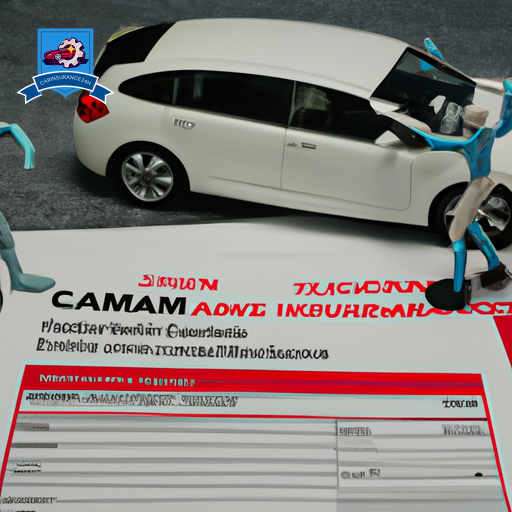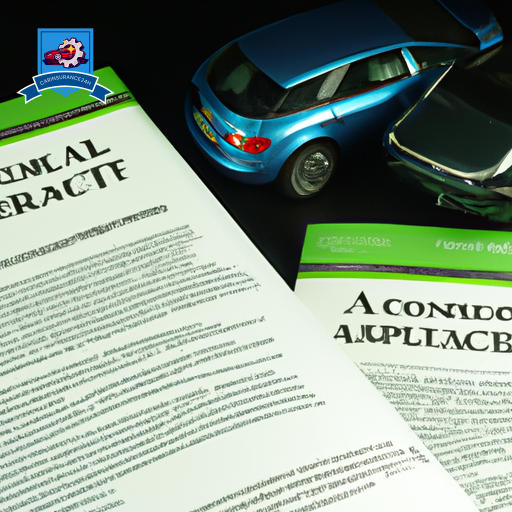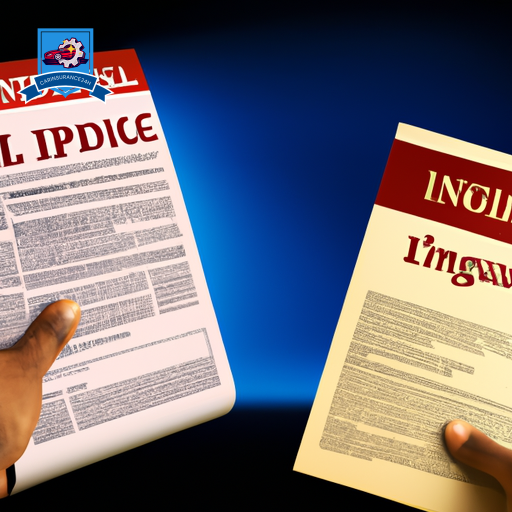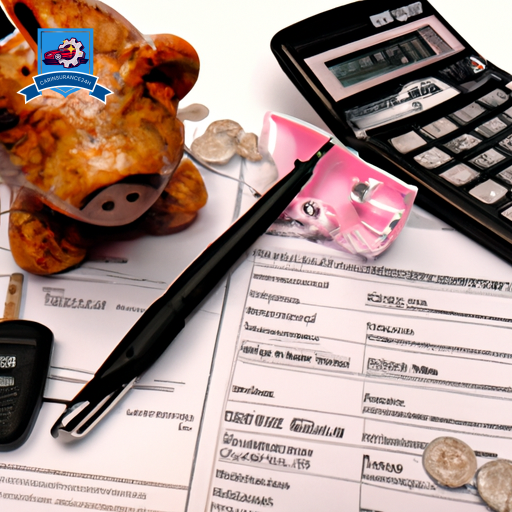Filing a claim for Personal Injury Protection (PIP) necessitates a thorough understanding of the process. This starts with assessing your policy’s coverage limits and gathering pertinent documentation meticulously. It is critical to report the accident promptly and complete the claim form accurately to ensure a smooth submission process.
As we delve deeper into the process, it becomes clear that cooperating with the investigation and managing potential disputes effectively are crucial steps. The intricacies involved in filing a PIP claim warrant a closer examination to ensure that one is fully equipped to navigate these complexities.
Understanding Personal Injury Protection

What exactly is Personal Injury Protection (PIP), and how does it function within the world of insurance policies?
Personal Injury Protection, commonly referred to as PIP, is a component of auto insurance that covers medical expenses and, in some cases, lost wages and other damages. PIP is designed to be paid without regard to who is at fault in an accident, making it a form of ‘no-fault’ coverage. This policy definition underscores its primary purpose: to make certain that individuals involved in vehicular accidents can access medical care promptly without the immediate need to establish fault, which can be a lengthy legal process.
The legal implications of PIP are significant, as they vary widely from one jurisdiction to another. In some states, having PIP coverage is mandatory, while in others, it is optional. The mandatory nature of PIP in certain areas highlights its importance in the broader framework of vehicular insurance law, highlighting the state’s role in protecting motorists and passengers from the financial burdens of unexpected injuries. Additionally, the parameters of PIP coverage, such as the minimum coverage amount required by law and the specific benefits it provides, are dictated by state legislation. This legal framework ensures a baseline level of protection for individuals while also allowing for variability in coverage based on individual policyholder choices and state-specific requirements.
Understanding the foundational aspects of Personal Injury Protection, including its policy definition and legal implications, is critical for policyholders. It empowers them to navigate the complexities of their insurance coverage effectively, making sure they are adequately protected in the event of a vehicular accident.
Assessing Your Coverage Limits
To effectively navigate the complexities of a Personal Injury Protection claim, an in-depth understanding of one’s coverage limits is paramount. This entails recognizing the boundaries of one’s policy and the constraints that may affect the extent of claimable benefits.
Understanding Coverage Limits
Evaluating your coverage limits is an important step in understanding the scope and extent of your Personal Injury Protection claim. This assessment involves a meticulous examination of your policy to identify the maximum amount the insurer will pay for different types of covered losses.
It is essential to ponder the deductible amounts—the portion you are required to pay before your insurer’s coverage begins. Additionally, understanding how premium adjustments could affect your coverage limits is critical. Premiums might increase upon renewal following a claim, which could influence your decision on the extent of coverage you maintain.
Policy Limitations
Evaluating the limitations of your Personal Injury Protection policy is an important step in understanding the boundaries of your coverage and ensuring thorough protection. It is essential to examine the policy’s exclusion clauses meticulously. These clauses delineate scenarios or conditions under which the policy does not provide coverage. Understanding these exclusions prevents unexpected denials and makes sure that policyholders are aware of the coverage scope.
Additionally, deductible implications play a critical role in the financial aspect of your coverage. Deductibles are the amount you must pay out of pocket before your insurance policy begins to pay. A higher deductible might lower your premium but could increase your financial burden in the event of a claim. Hence, evaluating both exclusion clauses and deductible implications is vital for comprehending your policy’s limitations.
Maximizing Claim Benefits
Understanding the limitations of your Personal Injury Protection policy sets the foundation for maximizing claim benefits by evaluating your coverage limits effectively. To enhance the effectiveness of your claim and make sure you are fully utilizing the benefits available, consider the following steps:
-
Review Your Policy: Thoroughly understanding your policy’s specifics can reveal additional benefits or coverages you may have overlooked.
-
Document Expenses: Keep a detailed record of all medical expenses, lost wages, and related costs incurred as a result of the injury.
-
Seek Legal Representation: An experienced attorney can provide invaluable guidance through the process, from filing the claim to settlement negotiation.
-
Negotiate Wisely: Be prepared to engage in settlement negotiations, leveraging legal advice to make sure your compensation reflects your needs and policy entitlements.
Gathering Essential Documentation
In the process of filing a Personal Injury Protection claim, gathering essential documentation is a critical step. Identifying the necessary documents, including medical records, is paramount to substantiate your claim effectively.
Organizing these records meticulously can streamline the claim process, ensuring a smoother progression towards resolution.
Identifying Necessary Documents
Gathering essential documentation is a critical initial step in filing a Personal Injury Protection claim. This process involves not only collecting the relevant documents but also ensuring their authenticity through document authentication. Engaging in legal consultations can provide guidance on which documents are pivotal and how to properly authenticate them.
The foundational documents typically include:
- Official Accident Report: Generally obtained from the police or the entity that reported the incident.
- Insurance Policy Documentation: To verify coverage and understand the terms.
- Proof of Income: If claiming lost wages, including recent pay stubs or tax returns.
- Witness Statements: Documented accounts from individuals who witnessed the incident.
These documents form the bedrock of a strong Personal Injury Protection claim, laying the groundwork for a thorough and substantiated filing process.
Organizing Medical Records
Organizing medical records is an essential step in the documentation process for a Personal Injury Protection claim, requiring meticulous attention to detail and accuracy. This phase involves the systematic arrangement of all medical documents pertinent to the claim, ensuring they are complete, up-to-date, and easily accessible.
Creating a digital backup of these records is highly recommended, not only as a precaution against loss or damage but also to facilitate swift sharing with legal counsel and insurance providers. However, it is vital to address privacy concerns by implementing secure storage and encryption methods for digital files. This protects sensitive health information from unauthorized access, maintaining compliance with privacy laws and regulations.
Properly organized medical records greatly streamline the claim process, supporting a compelling and thorough case submission.
Reporting the Accident Promptly
Prompt reporting of the accident is essential for the success of a Personal Injury Protection (PIP) claim. Immediate action not only guarantees that all necessary medical interventions are provided promptly but also solidifies the documentation of the incident, which is critical for the claims process. Contacting emergency services immediately following the accident ensures that an official report is filed, and any urgent medical needs are addressed. This step is also vital for legal reasons, as it can provide an unbiased record of the events leading up to and following the incident. In addition, seeking legal advice early on can help navigate the complexities of filing a PIP claim, ensuring that all procedural requirements are met efficiently and correctly.
To further emphasize the importance of reporting the accident promptly, consider the following points:
-
Immediate Medical Assessment: Contacting emergency services guarantees that any injuries are professionally assessed, providing a solid foundation for any medical claims.
-
Legal Documentation: An official accident report by authorities serves as a critical piece of evidence in your PIP claim, substantiating the circumstances surrounding the injury.
-
Preservation of Evidence: Reporting the accident without delay helps in preserving evidence at the scene, which may be vital for both your claim and any potential legal proceedings.
-
Statutory Deadlines: Many jurisdictions have strict deadlines for reporting accidents and filing claims. Prompt action guarantees compliance with these regulatory timelines, avoiding unnecessary delays or denials.
Adhering to these steps not only streamlines the process but also maximizes the chances of a successful Personal Injury Protection claim outcome.
Completing the Claim Form
Following the timely reporting of the accident, the next step involves meticulously completing the Personal Injury Protection (PIP) claim form. This document is vital in initiating the claim process and requires precise attention to detail to guarantee accuracy and completeness. The claim form solicits detailed information about the incident, the claimant, and the nature of the injuries sustained. It is of paramount importance that claimants familiarize themselves with the form and thoroughly review all sections before submission.
Claim deadlines are an essential aspect of the PIP claim process. Each insurance provider may have specific deadlines within which the claim form must be submitted following an accident. Failing to adhere to these deadlines can result in the denial of the claim, thereby forfeiting the claimant’s right to compensation under their PIP coverage. It is advisable for claimants to ascertain these deadlines from their insurance policy or directly from their insurance representative to ensure timely submission.
Form errors are another significant concern that can impede the claim process. Inaccuracies, omissions, or ambiguities in the information provided can lead to delays in processing the claim or outright denial. Claimants must ensure that all sections of the form are filled out correctly, providing clear and concise information. Supporting documentation, such as medical reports and proof of lost wages, should be attached as required to substantiate the claim.
Submitting Your Claim
Upon completing the Personal Injury Protection (PIP) claim form with meticulous attention to detail, the next critical step is to submit the claim to your insurance provider for processing. This phase is pivotal in the claims process and must be approached with a clear understanding of the procedural requirements and timelines. It is imperative that claimants are cognizant of the claim deadlines and the impact that a timely submission can have on the processing of their claim as well as potential repercussions on their insurance premiums.
When submitting your PIP claim, consider the following steps to guarantee a smooth process:
-
Review for Accuracy: Before submission, re-examine the claim form to verify all information is accurate and complete. This minimizes the risk of delays due to errors or omissions.
-
Understand Deadlines: Familiarize yourself with the submission deadline for PIP claims as stipulated by your insurance policy. Missing these deadlines can result in the denial of your claim, which could have financial implications.
-
Choose the Right Submission Method: Insurance companies may offer multiple submission options (e.g., online, mail, fax). Opt for the method that is most secure and provides proof of submission, such as certified mail or electronic receipt.
-
Keep Records: Retain a copy of all documents submitted, including the claim form and any supporting documentation. This will be critical if there are questions or disputes regarding your claim.
Adherence to these steps will help make sure that your claim is processed efficiently, safeguarding your rights and potentially mitigating any unnecessary increases in insurance premiums.
Cooperating With the Investigation
After submitting your Personal Injury Protection (PIP) claim, collaborating with your insurance company’s investigation team is a critical step in ensuring the timely and fair processing of your claim. This cooperation involves providing accurate information, responding to inquiries in a timely manner, and understanding the roles and concerns that come into play during the investigation, including the law enforcement role and privacy concerns.
The investigation process is designed to verify the details of the claim, assess the extent of injuries, and determine the appropriate compensation. It is essential to be forthcoming with all requested information while also being mindful of your privacy rights. Your insurance company may require medical records, accident reports, and other documentation to substantiate your claim.
| Aspect of Cooperation | Details |
|---|---|
| Law Enforcement Role | Law enforcement agencies may provide critical accident reports and evidence. Cooperating with them ensures the insurance company has access to necessary legal documentation. |
| Privacy Concerns | While cooperating, it’s important to safeguard your privacy. Only share information that is relevant and required for your claim. |
Managing Claim Disputes
Through claim disputes often require a thorough understanding of the process and a strategic approach to a fair resolution. When managing disputes over a personal injury protection claim, it is essential to approach the situation with a clear mind and an organized strategy. This involves gathering all pertinent documentation and evidence to support your claim and understanding the intricacies of claim negotiation and the potential need for legal representation.
To effectively manage claim disputes, one should consider the following steps:
-
Documentation and Evidence Gathering: Compile all relevant medical records, accident reports, and any correspondence related to the claim. This solid foundation of evidence is critical in supporting your case during the dispute resolution process.
-
Understanding Your Policy: Familiarize yourself with the specifics of your insurance policy, including coverage limits and exclusions. This knowledge is essential for identifying any discrepancies in the insurer’s interpretation of your claim.
-
Claim Negotiation: Engage in claim negotiation with the insurance company. This involves presenting your evidence and arguments in a concise and compelling manner to advocate for a fair settlement.
-
Seeking Legal Representation: If negotiations reach an impasse, securing legal representation can be an essential step. A lawyer specializing in personal injury claims can offer valuable advice, represent your interests, and navigate the complexities of the legal process.
Managing claim disputes necessitates a strategic approach that combines thorough preparation with knowledgeable negotiation. By adhering to these steps, claimants can enhance their chances of achieving a favorable resolution to their personal injury protection claim disputes.
Frequently Asked Questions
What Specific Steps Should I Take if My Insurance Company Denies My Personal Injury Protection Claim?
If your insurance company denies your claim, promptly review the denial letter, adhere to claim deadlines, and gather thorough documentation to support your appeal. It’s imperative to understand the reasons for denial and address them accurately.
How Does Filing a Claim for Personal Injury Protection Affect My Insurance Premiums in the Long Term?
Filing a personal injury protection claim can be a double-edged sword; it may lead to premium fluctuations and considerations at policy renewal. Insurers evaluate risk, potentially adjusting rates to reflect the increased cost of coverage.
Can I File a Personal Injury Protection Claim if the Accident Was Partially My Fault?
Yes, you can file a personal injury protection claim even if the accident was partially your fault, due to principles of comparative negligence which consider fault percentage in determining the compensation you’re entitled to receive.
What Are My Legal Options if the Final Settlement Offered by the Insurance Is Insufficient to Cover All My Medical Expenses and Losses?
When the final settlement offered by insurance is insufficient, exploring legal representation and negotiation strategies is essential. Approximately 95% of personal injury cases are settled pretrial, emphasizing the importance of skilled negotiation in achieving satisfactory outcomes.
Is It Possible to Reopen a Personal Injury Protection Claim After It Has Been Settled if New Injuries or Issues Arise Related to the Original Accident?
Reopening a personal injury protection claim after settlement finality is contingent upon specific reevaluation criteria, including the emergence of new injuries directly linked to the original incident. This process demands thorough documentation and legal guidance.










